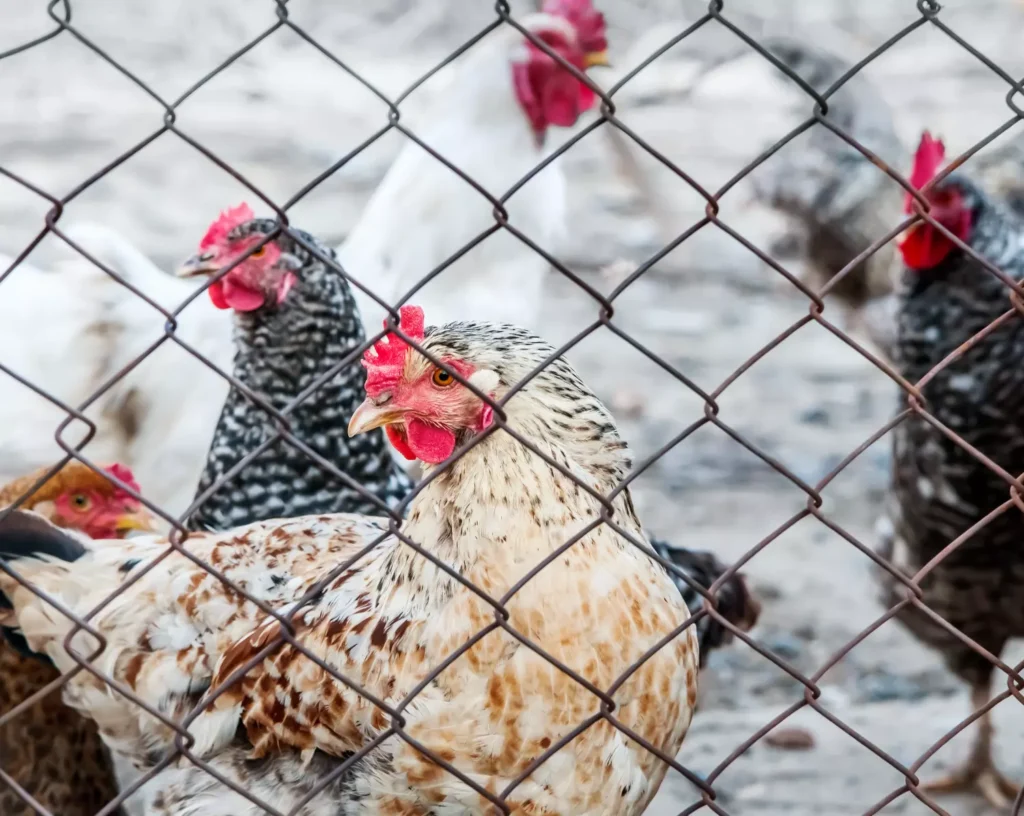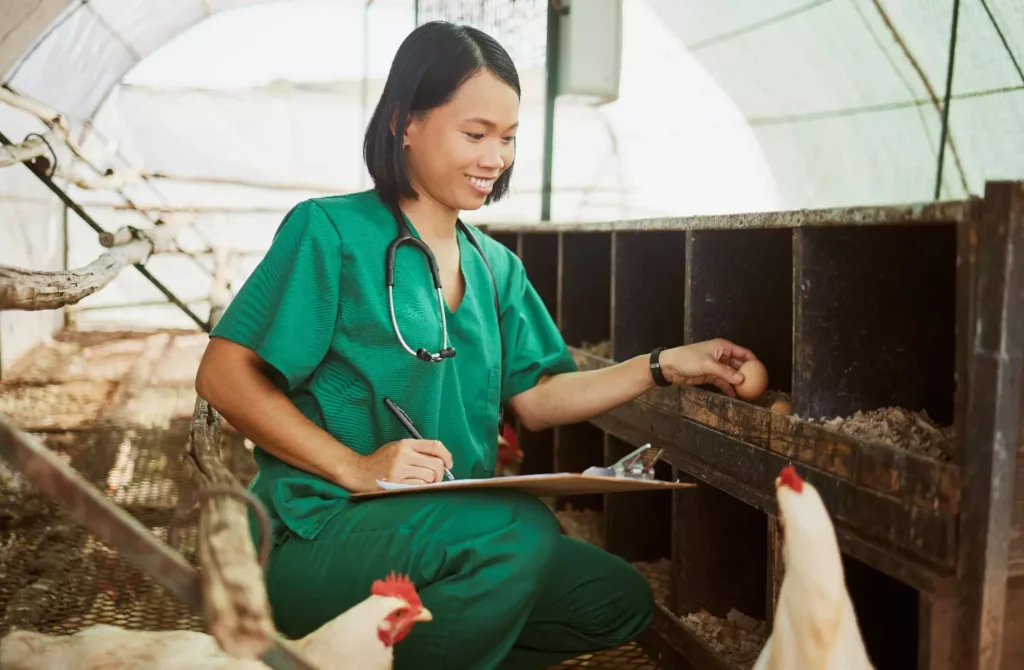
Avian influenza (bird flu) is a serious zoonotic disease that affects wild birds, poultry, and other domestic and captive birds. Human infection is sporadic and is mainly associated with close contact in a highly contaminated environment.
The risk that the virus could mutate to become transmissible between humans has triggered a substantial investment of organisms competentenes in preparedness and response.
Symptoms of avian Influenza
Avian influenza (bird flu) is caused by infection with a type of influenza virus. These viruses are usually spread among wild waterfowl, such as ducks and geese, but can also infect domestic birds, such as chickens and turkeys. In rare cases, these viruses can also infect people, and symptoms of infection vary, but can range from no symptoms to severe illness (such as influenza). newcastle virus in birds), and death.
Wild birds carrying the avian influenza virus (bird flu) usually show no signs of illness, but the virus can cause disease in domestic birds, including commercial poultry. This disease is a serious concern for poultry farmers and the public health community because it can quickly kill large numbers of birds. Highly pathogenic avian influenza A (HPAI) virus causes a more severe form of the disease in poultry and is more easily transmitted.
The symptoms of avian influenza in poultry can include a sudden onset and high mortality rates, swelling of the head and neck (crest and beards ruffled), blue coloration of the crest and the beards, respiratory difficulty, reduced egg production, diarrhea, and loss of appetite. In some cases, birds may develop a fading purple on the head and legs.
While infection of avian influenza in humans are very rare, can be extremely dangerous if not treated in time (just like with the west nile virus west nile virus). They can cause pneumonia, which can be fatal if not treated with a ventilator.
The virus can also exchange genes with the human influenza virus, which could result in a new strain of influenza that would be transmissible between people, and could cause a pandemic.
To prevent bird flu, people are advised to avoid contact with live poultry or poultry markets and only eat cooked meat and eggs. In addition, people should wear gloves and a medical mask when handling their own or family poultry, and wash their hands after contact with these animals.
They should also avoid visiting the flocks of friends or neighbors, especially if they appear ill. People traveling to countries with known outbreaks of avian influenza (bird flu) should monitor their symptoms closely and seek medical attention immediately if they develop respiratory signs.

Transmission of avian Influenza
Avian influenza is a respiratory infection caused by strains of influenza A virus of the family OrthomyxoviridaeAvian influenza infection can result in severe and potentially fatal illness. Avian influenza viruses are a concern because they can mutate into forms that can cause illness in humans and are spread by direct contact with infected birds or contaminated surfaces.
The majority of human cases of avian influenza have been the result of exposure to an infected bird. The virus is shed in saliva, nasal secretions, and feces. It can also be spread by touching contaminated surfaces and breathing in the particles. The infected poultry can also spread the virus by sneezing or coughing.
Direct contact with wild or domestic birds, especially those that appear sick, you can spread the virus. It can also spread through contaminated food or water. The large meeting of various wild birds, such as those found in lakes, can lead to the reunification (mixture) of different influenza virus A. This process enables the development of new subtypes of influenza that can cause avian influenza in humans.
The H5N1 virus that is causing disease in humans is the result of a reorganization genetics. Combining genes from viruses eurasian HPAI H5 viruses and N2 americans LPAI. The virus H7N9 that cause the disease in China is also the result of the genetic rearrangement, mixing genes of the virus HPAI H7 eurasian and LPAI of Hong Kong with an influenza virus To human.
Although it has never been confirmed, scientists believe that a combination of an influenza virus avian influenza A virus in a human being could allow it to spread from person to person. This would be dangerous because few people, if any, would have a natural immunity to the new virus and existing vaccines may not be effective.
It has not been shown that the mass slaughter of flocks affected is a preventive measure effective against the avian influenza outbreaks in the long term. You can prevent the evolution of host resistance and increase the virulence of the virus, making it more difficult to control. It can also cause significant economic damage to the agricultural industry.
Prevention of avian Influenza
Avian influenza (bird flu) is a disease of domestic and wild birds, which can have different impacts on poultry depending on the subtype. The H5N1 strain, for example, is highly pathogenic and causes severe symptoms in birds; it has also been found to infect mammals such as mink, seals and sea lions. This has raised fears that the virus could eventually infect people and cause a human pandemic.
Avian influenza can be prevented and they are developing effective vaccines. Meanwhile, the farmers can practice biosecurity. This includes reducing the spread of the virus through feces, respiratory secretions and control the contact between live birds. It is also important to keep poultry away from areas where food and water may be contaminated with faeces or dead birds.
The training is also key. Workers exposed to birds or contaminated materials must receive training on how to prevent the transmission of the virus, including when and how to sanitize surfaces (e.g., wet/spray before to sweep the material potentially infected). Also must be trained on how to monitor and report any illness potential, including the possibility of an outbreak of avian influenza, so that they can take necessary precautions.
The best way to reduce the impact of an outbreak is to eradicate infected poultry – this is a difficult task, but it is vital for human health and the country’s economy. Owners whose birds are destroyed by the CFIA are eligible for compensation.
Although the mass slaughter can limit the spread of the immediate HPAI, preventing the evolution of resistance in the affected bird and gives as a result a greater virulence of the virus in general. This makes it more difficult to control outbreaks.
If the H5N1 avian influenza virus mutates and becomes more easily transmissible between humans, it will likely result in a severe pandemic. That is why it is crucial to continue research into the virus, its impact on human and other species' health, and how to prevent and contain outbreaks.

Treatment for bird Flu
Although transmission of avian influenza (bird flu) to humans is rare, the disease can be extremely deadly. If illness is confirmed, a medical professional may prescribe antiviral medications. These medications can help reduce the severity of symptoms and the duration of illness; taking these medications as soon as possible after exposure to the virus can help protect against serious complications such as pneumonia.
Avian influenza is a viral infection that affects multiple species of birds worldwide. It has been shown to cause large-scale poultry deaths and economic losses. The disease causes swollen heads (combs and wattles), blue discoloration of the comb and wattles, loss of appetite, respiratory distress, and diarrhea. It also causes a significant drop in egg production as we have also seen with other diseases that affect poultry such as infectious coryza.
The virus is spread by direct contact with infected live birds or by contact with contaminated environments including manure, garbage, clothing, vehicles, equipment and food. Wild birds, especially waterfowl such as ducks and geese, are natural reservoirs for avian influenza viruses. They can carry and shed the virus in their saliva and feces and are therefore the main source of avian influenza in domestic poultry.
Humans can become infected by eating raw or undercooked poultry and eggs. This can happen in restaurants, at home, and when traveling abroad to countries with outbreaks of avian influenza. It is important to check travel advisories for any destination before you go, as avian influenza (bird flu) can have a significant impact on tourism, food production, and wildlife.
A strain-specific influenza A virus can adapt to human hosts through reunification with different strains or antigenic drift. The adaptation leads to the creation of new subtypes that can cause disease in humans. These strains are called avian influenza A(H5N1) or H7N9, according to the specific genetic makeup of the virus.
The only way to prevent avian influenza or bird flu is to avoid contact with sick and dead birds, especially waterfowl. Practicing good hygiene, including frequent handwashing, thoroughly cooking poultry and eggs, and ensuring proper disposal of waste can significantly reduce the risk.